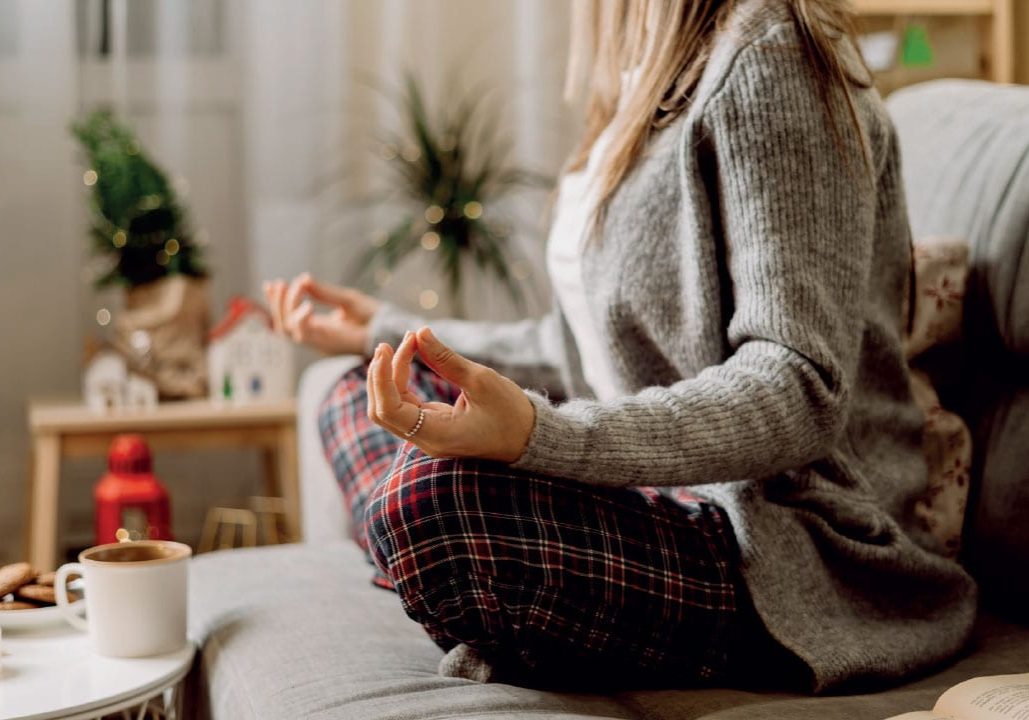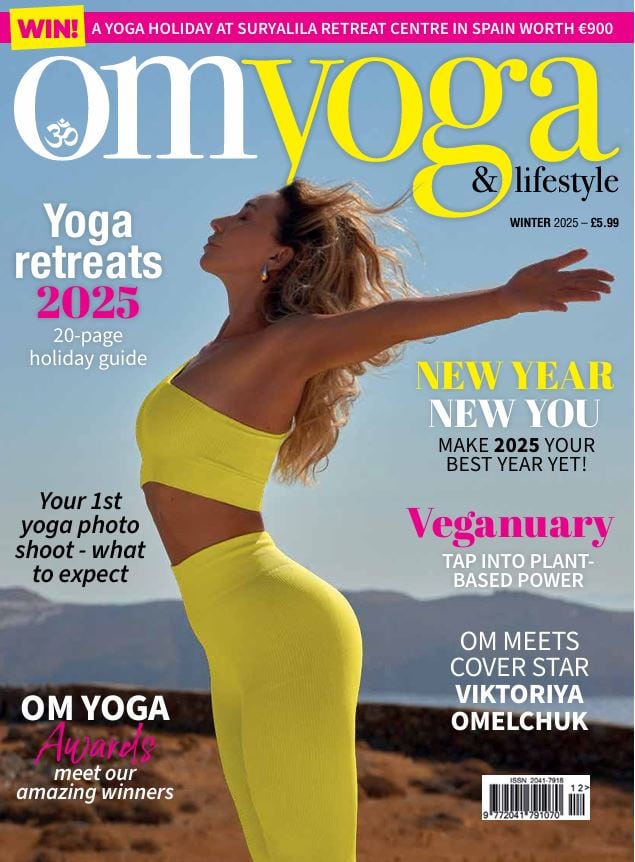
Nourishing prana during the cold dark months
Mapping the inner landscape through a felt sense of listening and applying the yoga medicine required during the winter season.. By Lauren Bloxham
Reading time: 4-5 minutes
Managing prana, our sense of vitality, is the heart of our yoga practice. More than making shapes and creating dynamic flows, as fun as those things can be, our practice is one of self-awareness, which in turn can reveal the experience of our inner landscape.
Made up of our minds and the stories we tell ourselves, the feelings our experiences and perceptions create, and deeper still the wellspring or source of motivation at the root of it all, our inner landscape is the experience we are having of our prana flowing, or not flowing as it should.
As we begin to understand the fluid and changeable state of our energy body, we learn to understand and apply the practices which serve to strengthen us.
More than the knowledge we possess about what may or may not be good for us, the application of yoga practices is highly personal and requires us as individuals to feel their effects within our own bodies. This takes a felt sense of listening. As we move closer to the felt experience, we gather new understanding about what it is we are cultivating, and this is the skill of an advanced practitioner.
It’s interesting to think about the types of yoga practices we are drawn towards. In the early days of practice, we may gravitate towards something familiar. If our lives are hard and fast in nature, then perhaps we seek out hard and fast practices? If our nature tends towards introversion and slow contemplation, then perhaps those might be the practices that feel more ‘us’. But in sticking to what we know, are we reinforcing existing patterns of being within us? Are we working to our strengths at the expense of energy haemorrhages somewhere else in our systems?
An example of this would be that if life is exceptionally demanding, whether through work, family, finances, health or other, and our inner narrative says, ‘just keep going’, it may be the case that we want to feel strong and powerful because we imagine that’s what will get us through. Strong and powerful yoga classes may remind us of what it feels like to feel vital – but in fact further deplete our energy body. In this example, we are cultivating more of the same demands that are throwing us off balance in the first place.
Finding softness and comfort when we are conditioned for hard and harsh can feel counter intuitive, it may even be a life’s work. But, in choosing something different, we choose personal growth and can find new strength and greater balance. The ayurvedic principle that ‘like increases like’ teaches us that ‘opposites create balance’ which might be a useful guide in beginning to understand which practices are in service to our prana.
It's not just our individual natures that make up our experience of balance, it’s nature more widely.
It’s the time of day, time of month, cycle of the moon and the seasons. From the wider cycles of nature that we are within, to the micro cycles of nature within us, our awareness through our felt sense of listening is vital in orientating where we are within it all.
Why we might be lacking in energy, why we may be feeling strong and bolstered and what might be supportive.
During the darker months of the year, it’s natural to feel less energetic. There is less daylight from which we draw energy, less fresh food. Nature is quieter as trees draw resources from their roots, animals hibernate and the dark days and colder weather mean we are less inclined to leave the comfort of our homes.
During the dark months our yoga classes can be a lifeline though. Whilst in response to still dark seasonal changes we may want to curl up and hibernate, on the principle of like increasing like – perhaps connection, community, light and movement are the very thing we need to find greater balance. It may be the hardest time of year to find the motivation to leave the house, particularly for the more introverted slow movers among us, but the shared experience of being in the yoga class alone is an act of compassion, being with others who have made the same effort can be comforting. Seeing the same faces show up week on week can provide the thread of strength we need to preserve our wellbeing through the winter. The effort it takes to get to our yoga classes in the dark wet and cold evenings, whilst hard, is the very spark of light required to serve the energy we so vitally need.
It comes down to opposite action creating balance again. Just as we adjust our clothing for the weather – think about the warm, soft and cosy clothing that comes out during the harsh, cold months. Or the warm and spicy soups, stews and curries or roast dinners that we find comfort and nourishment from over winter. The same goes for yoga practice. When the system feels slow and sluggish, when thoughts are heavy and awareness is dull, then there’s nothing better than a sparky vinyasa flow to warm us up, to burn through the dullness and reignite the inner light. But if the mind is a harsh critic and the body feels tense and frayed then it’s the soft, yielding qualities of restorative yoga and yoga nidra that can bring the balance we need. If life feels unpredictable and chaotic, then the structure of a weekly class can be like an anchor within it all.
Wherever you find yourself during the dark and cold months, take a moment to tune in more deeply…to engage a felt sense of listening and to apply the yoga medicine that is just right for you.
Practice yoga with Lauren Bloxham online or on retreat at: sabda.uk Connect on IG @laurenbloxham.yoga or listen to ‘The Honey Doctrine – Ancient Yoga, Modern Living’ wherever you find your podcasts


